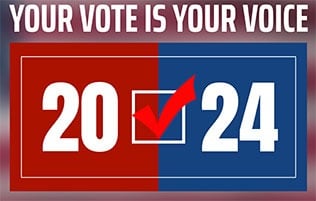Press release
Some MCWD customers and community members have raised question about the need for a watering schedule this year after a winter with significant snowfall. In response to questions, MCWD is providing the following responses to commonly asked questions to explain why water conservation regulations continue to be implemented.
Why is MCWD enforcing irrigation restrictions when water is plentiful?
Making Water Conservation a California Way of Life
In 2016, Governor Brown issued an Executive Order seeking to make water conservation a “California Way of Life.” The Order requires water purveyors to implement measures ensuring efficient use of water, elimination of water waste, strengthening local drought resilience and improvement of agricultural water use. MCWD is required to ensure the Governor’s directives are being met.
Landscapes in Mammoth Lakes can thrive on MCWD’s irrigation schedule
Landscapes that are properly installed can be maintained with three day a week watering.
Soils should be amended prior to planting and existing plants should be mulched.
Watering schedules and prohibitions on runoff and misaligned sprinkler heads ensure
customers properly maintain their landscape without wasting water. These measures
support the Governor’s Executive Order.
Saving water saves energy and chemicals
MCWD has three treatment plants that require energy and chemicals to process surface and groundwater before it is delivered to customers. After treatment, the water is pumped to storage tanks and to customer’s homes and businesses. Groundwater requires three times more energy to provide since it must be pumped from deep wells before it is delivered to the treatment plants. Therefore, using excess water on your landscape wastes energy and chemicals.
Promote healthier, more resilient landscapes
Watering every day can stress landscape plants. Shallow roots, caused by frequent short irrigation cycles, lead to greater dependency on daily irrigation. Shallow rooted plants are more easily stressed by heat and drought and are prone to disease. Deep infrequent watering promotes deep roots leading to healthier more vibrant looking plants.
What happens to water not used by the Mammoth community?
Supports ecosystem health
Water not diverted or pumped by MCWD for supply to our customers fills lakes,
rivers, and meadows. High river flows and flooded meadows allow seedlings to
establish in areas that may remain dry during lower runoff years. These seedlings
provide food and shelter for wildlife and shade waterways and ground surfaces.
Shade and higher stream flows keep lakes and streams cooler and cleaner, this is
beneficial for trout and invertebrates.
Groundwater recharge
MCWD’s surface water storage is limited. During the spring and early summer
MCWD primarily relies on surface water to meet customer demand.
Later in the year when irrigation demand is high and stream flows lessen, MCWD
supplements, or in some years, completely switches to supplying groundwater.
After one or more years of heavy pumping, as occurred during the drought, some
of MCWD’s wells require a couple of normal runoff years to recharge.
Water not used by Mammoth goes to Los Angeles
Eventually a mix of water from the Mammoth Basin goes to supply the City of
Los Angeles.
However, before it reaches the city, it provides a multitude of beneficial uses such as, providing a home to fish and other aquatic animals, serving as a place to recreate, watering the many seeps and springs in the Eastern Sierra, irrigating our natural landscape, and supplying the many communities that live between Mammoth and Los Angeles. MCWD recognizes the need for water from the Eastern Sierra to support the residents and businesses in Los Angeles and supports the City’s actions to reduce water waste.
How do MCWD’s irrigation regulations compare to other water agencies in the State?
Mammoth Community Water District
3 days a week, from 1am to 11 am and 4 pm to 11 pm (51 hours per week)
Odd Addresses: Tuesday, Thursday and Sunday
Even Addresses: Monday, Wednesday and Saturday
Los Angeles Department of Water and Power
3 days a week and no watering from 9 am to 4 pm
Each station can only run for 8 minutes or 30 minutes from water efficient
sprinkler heads. (Hours per week depend on sprinkler system and number of
stations)
City of Fresno
3 days a week and no watering from 9 am to 6 pm (45 hours per week)
Discover more from Sierra Wave: Eastern Sierra News - The Community's News
Subscribe to get the latest posts sent to your email.
















